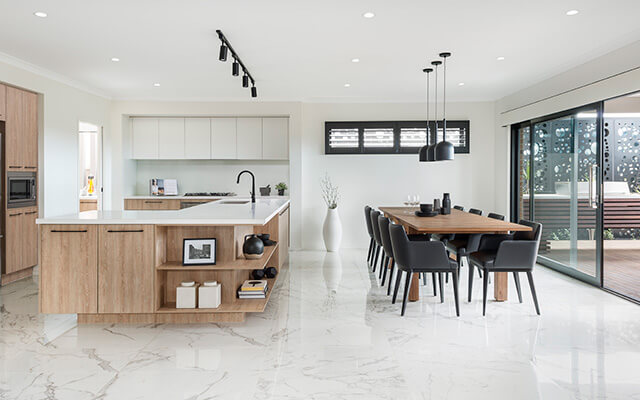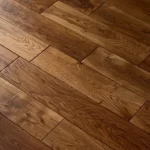The 9 Best Flooring Options for Your Home
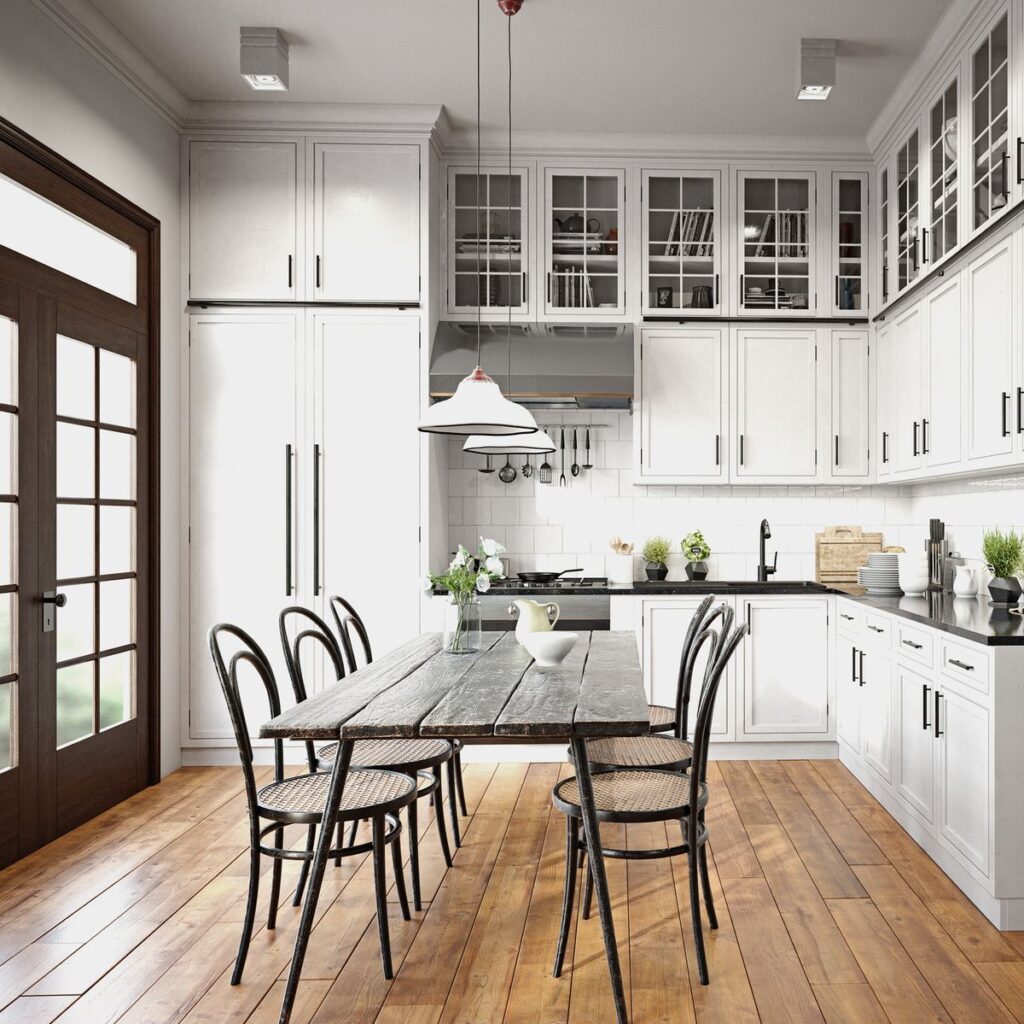
Flooring is a vital aspect of any home, providing both practical functionality and aesthetic appeal. Choosing the right flooring involves considering factors like durability, design, and budget. As an investment comparable to significant household expenses, such as a new car or kitchen appliances, flooring decisions should be well-informed. The Good Housekeeping Institute, with its century-long expertise, recognizes the importance of flooring in enhancing a home’s appearance and functionality. Through rigorous testing, various flooring materials have been evaluated, ranging from timeless options like wood and stone to newer alternatives such as vinyl and engineered wood. As trends evolve, the guide also covers contemporary materials like concrete and wood-look porcelain. The comprehensive flooring guide offered here provides insights into different flooring options, including their pros, cons, and approximate pricing. It emphasizes the significance of prioritizing quality materials for high-traffic and visible areas, while considering cost-effective and durable alternatives for other spaces.
Hardwood Flooring
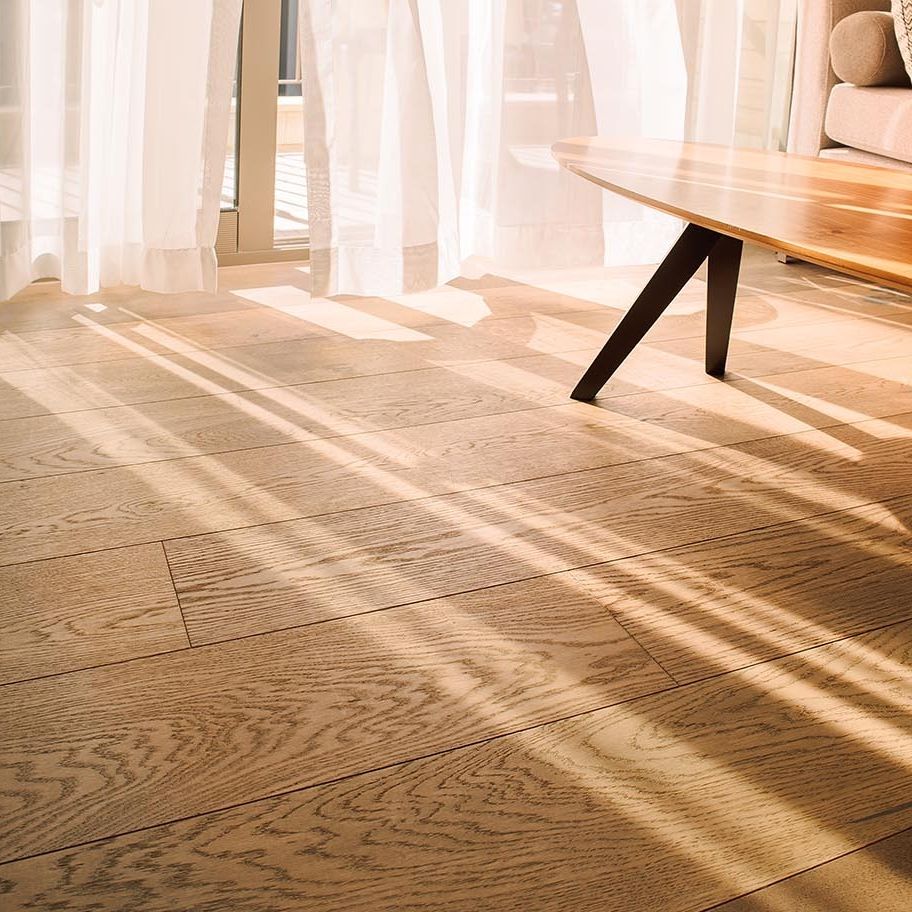
Hardwood flooring comes in two primary types: solid wood flooring, composed of a single solid piece of wood, and engineered wood flooring, featuring a thin veneer of real wood bonded to layers of structural plywood. This versatile flooring is available in a variety of wood species, with popular options including oak, ash, maple, and walnut.
Pros:
- Warmth and Beauty: Hardwood flooring offers a timeless appeal, providing warmth and beauty to spaces.
- Durability and Longevity: Well-maintained hardwood floors, especially solid wood versions, can be sanded and refinished multiple times, ensuring longevity for decades or even centuries.
Cons:
- Cost: Hardwood flooring tends to be relatively expensive compared to other flooring options.
- Vulnerability to Damage: Hardwood floors are susceptible to dents and scratches, impacting their appearance over time.
- Moisture Sensitivity: Solid wood flooring is sensitive to changes in humidity, leading to expansion, contraction, cracks, splinters, and squeaky boards. Engineered flooring performs better in moisture-prone areas like kitchens and basements.
Cost:
- Solid Wood Flooring: $5 to $10 per square foot, installed.
- Engineered Wood Flooring: $4 to $9 per square foot, installed.
Laminate Flooring
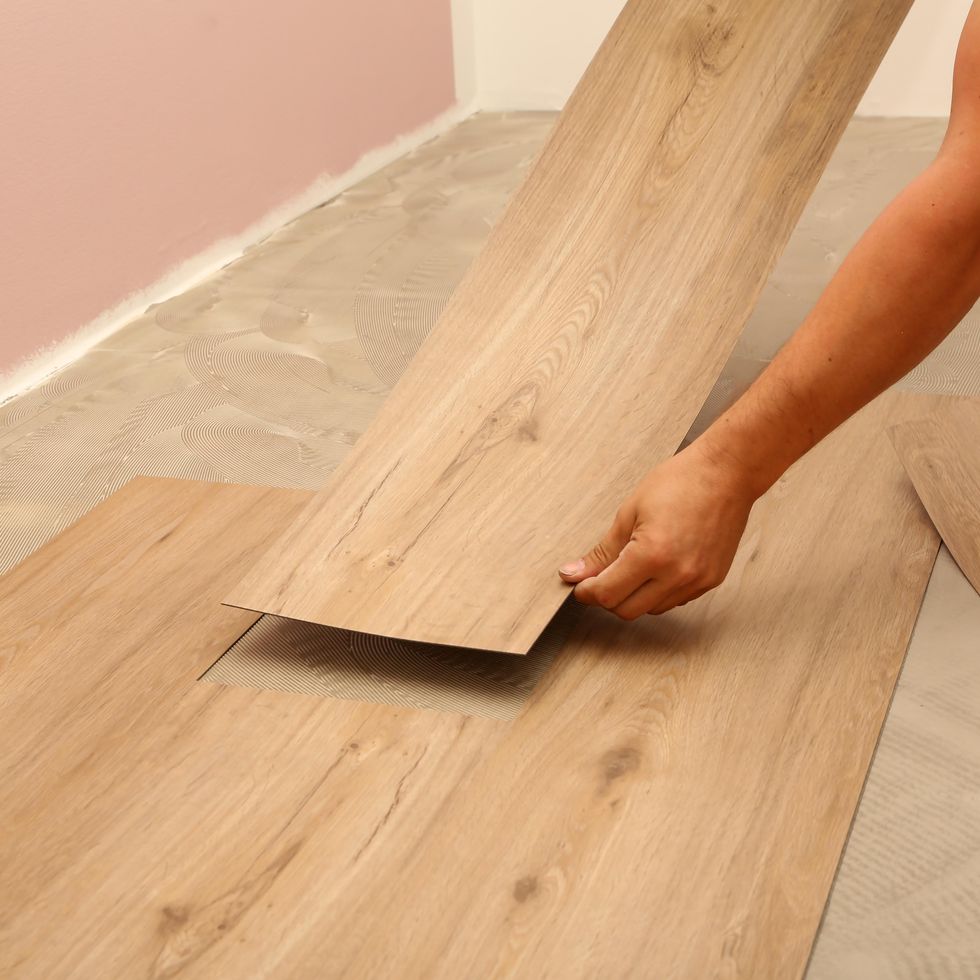
Laminate flooring is an engineered product featuring a photo of wood, stone, or other materials with a protective plastic coating. The substrate typically consists of dense fiberboard.
Pros:
- Durability: Laminate flooring is highly resistant to scratches and dents, making it one of the most durable options.
- Affordability: It is among the least expensive flooring options.
- DIY-Friendly: Laminate often comes as a DIY-friendly “floating” floor system with planks that snap together, eliminating the need for nailing or gluing.
Cons:
- Artificial Feel: Laminate may have a plastic feel and sound underfoot, lacking the authentic look and feel of real wood or stone.
- Cannot Be Refinished: Laminate flooring cannot be refinished, limiting its lifespan compared to some other flooring types.
- Environmental Concerns: The manufacturing process involves the use of formaldehyde and other chemicals, raising environmental and health concerns.
Cost: $3 to $7 per square foot, installed.
Vinyl Flooring
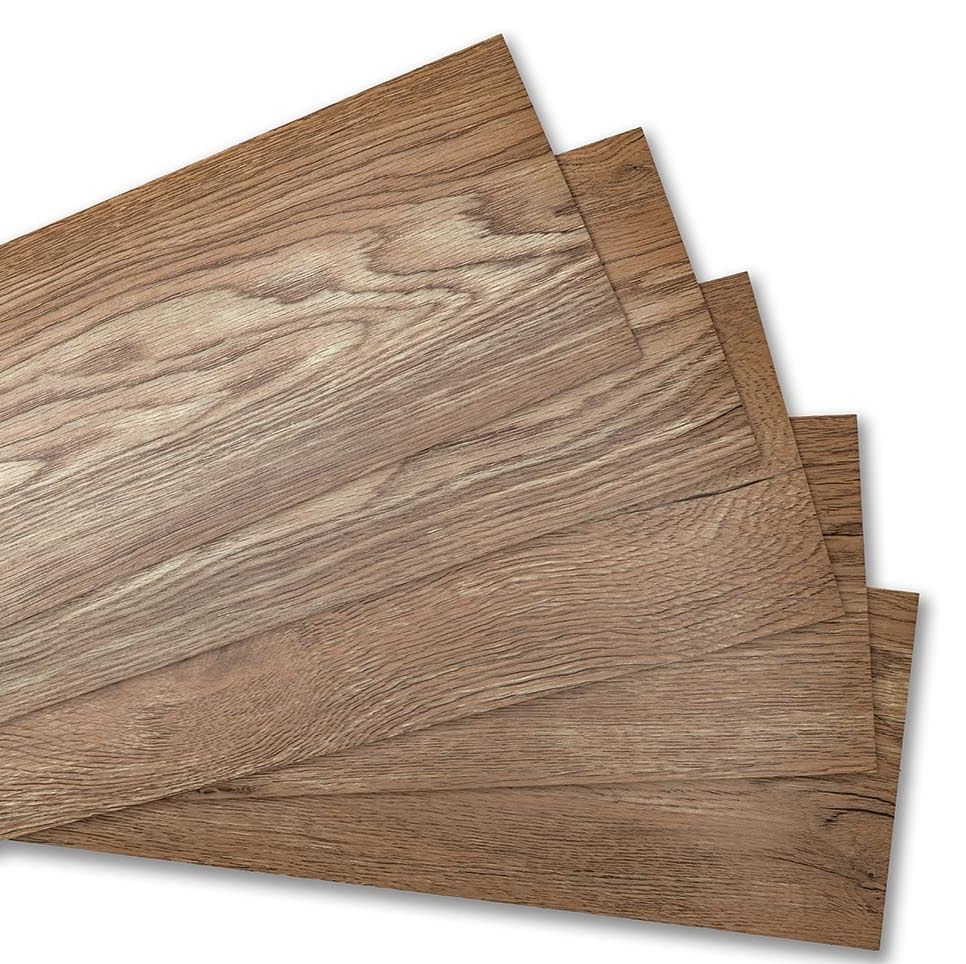
Vinyl, also known as resilient flooring, is the fastest-growing category of flooring, ranging from inexpensive peel-and-stick tiles to luxury vinyl tile (LVT) with multiple layers, including a high-definition printed image, a durable top layer, and cushion layers.
Pros:
- Affordability: Entry-level sheet vinyl is very affordable.
- Durability: Vinyl resists stains, scratches, and dents, making it suitable for various spaces, including basements and bathrooms.
- Waterproof: Vinyl is waterproof, adding to its suitability for moisture-prone areas.
- Ease of Installation: Installation is easy, particularly for adhesive tiles and floating planks.
- Realistic Look and Feel: LVT has the look and feel of real wood, often challenging to distinguish from solid wood in tests.
Cons:
- Not Authentic: Despite improved patterns, vinyl doesn’t replicate the authentic look of real wood or stone.
- Non-Refinishing: Vinyl cannot be refinished, requiring full replacement once it wears out.
- Cost: LVT can be surprisingly expensive, often comparable to the cost of real wood.
Cost: $2 to $6 per square foot, installed.
Carpet
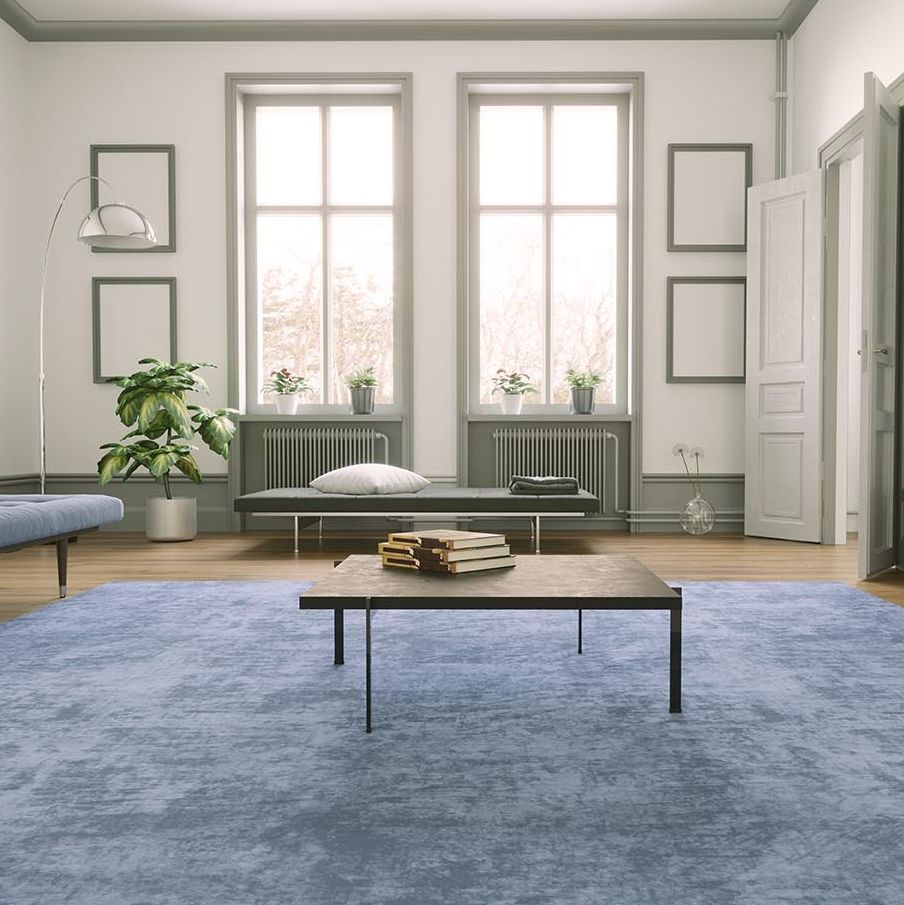
Carpet remains the largest flooring category in the U.S., with tufted and woven options dominating the market. Tufted carpets have small nylon fibers poking through a polyurethane backing, while woven carpets use yarn, typically made of wool, creating a more expensive option.
Pros:
- Comfort: Carpet is the most comfortable flooring material.
- Affordability: It is cost-effective and available in a variety of colors and patterns.
- Easy Installation: Carpet is easy to install.
- Maintenance: Regular vacuuming is usually sufficient for maintenance, and stain-resistant versions are easy to clean.
Cons:
- Dirt Retention: Carpets can hold dirt and dust, which may be problematic for allergy sufferers.
- Woven vs. Tufted: Woven carpet, though more expensive, is better at resisting dirt retention than tufted carpet.
- Anti-Static Properties: Wool, often used in woven carpets, is anti-static and doesn’t attract dust as much as nylon tufted carpets.
Cost: $3 to $10 per square foot, installed.
Stone Flooring
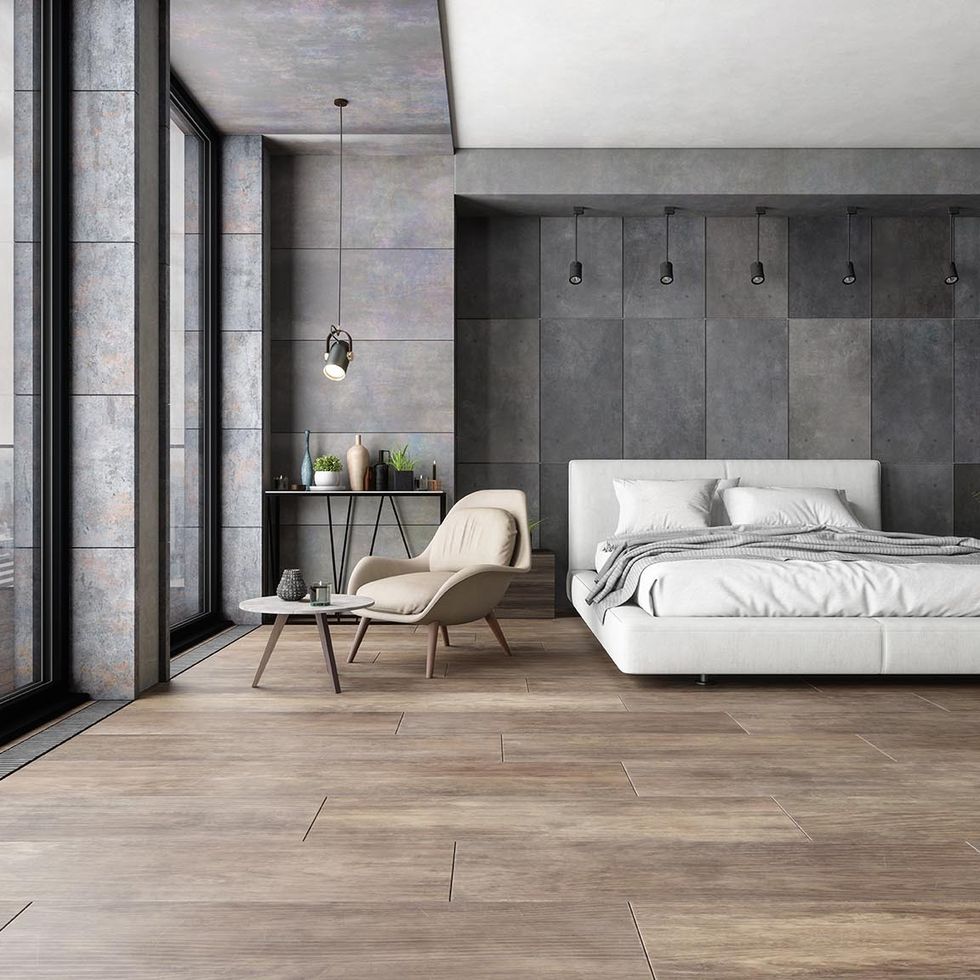
Stone flooring, a timeless material, comes in three main types: sedimentary (travertine, limestone), igneous (granite), and metamorphic (marble, slate). Each type has its unique formation process and characteristics.
Pros:
- Character and Uniqueness: Stone flooring is characterized by its uniqueness, with no two stones being the same.
- Durability: Stone is a durable material, capable of withstanding heavy foot traffic and resisting fading from sunlight.
- Allergen Resistance: Stone helps keep dust and allergens at bay.
Cons:
- Premium Cost: Stone flooring comes at a premium cost.
- Professional Installation: Professional installation is often required.
- Hardness: Stone floors are not soft underfoot and may lead to breakage of dropped items.
- Sealing Requirement: Many types of stone floors require sealing to resist stains.
Cost: $3 to $7 per square foot, installed.
Concrete Flooring
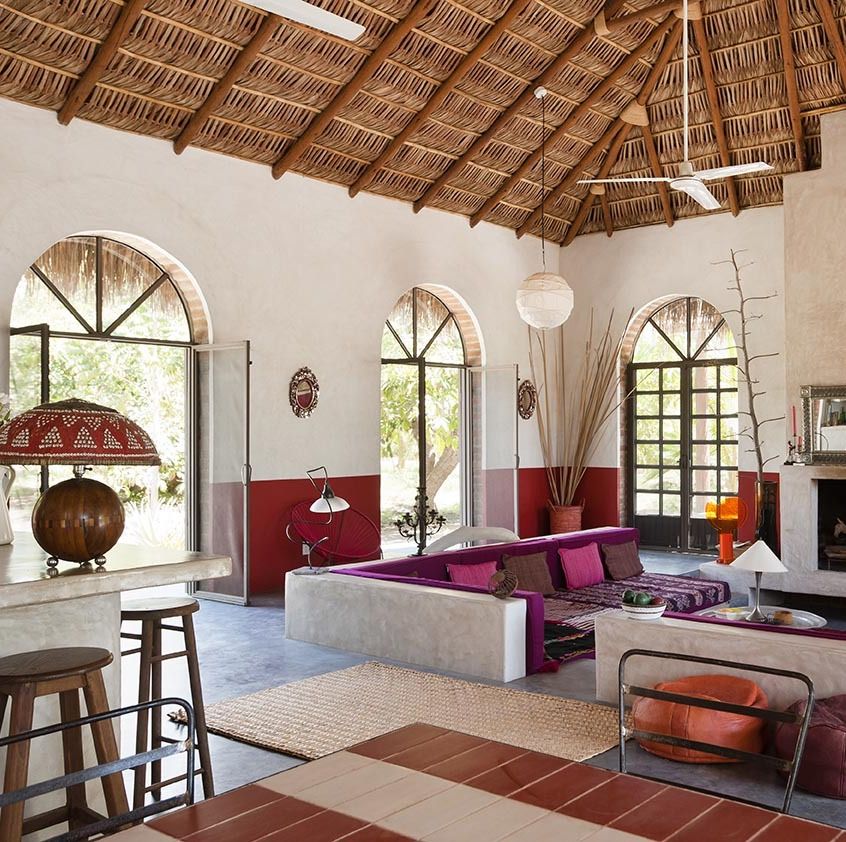
Concrete flooring, once a basic building material, has become a fashionable choice for high-end builders and designers. It offers versatility in color, surface treatments, and customization, making it a unique flooring option.
Pros:
- Versatility: Concrete floors can be customized in color, surface treatments, and patterns.
- Durability: Concrete floors are durable and easy to maintain with proper sealing.
- Heat Conductivity: Suitable for radiant heating installations due to its good heat conductivity.
Cons:
- Cost: Concrete floors can be pricey, especially as a custom product.
- Professional Installation: Requires professional installation.
- Hardness: The rock-hard material can be unforgiving and may require resealing annually to prevent stains.
Cost: $3 to $8 per square foot, installed.
Tile Flooring
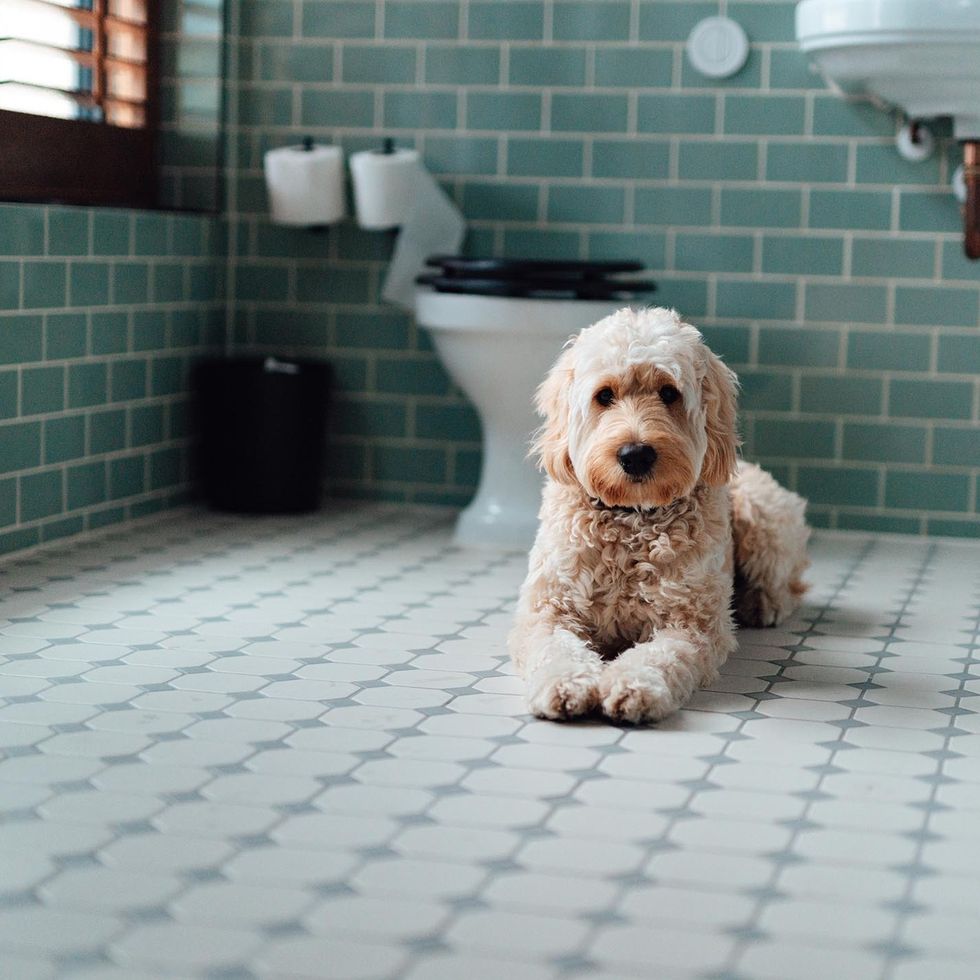
Tile flooring comes in two main types: ceramic and porcelain. Ceramic, made from water and sand, is softer and more affordable, while porcelain, fired at a higher temperature from a denser clay, is harder and less porous.
Pros:
- Classic Look: Tile floors offer a classic look with various colors and design options.
- Waterproof and Low-Maintenance: All tiles are waterproof and easy to maintain.
- Durability: Porcelain tile is highly durable, resisting scratches and dents.
Cons:
- Difficult Installation: Tile flooring requires professional installation due to its challenging installation process.
- Cost: Porcelain tile can be pricey, comparable to solid wood flooring.
Cost: $4 to $15 per square foot, installed.
Cork Flooring

Cork flooring, made from harvesting cork tree bark, is a renewable material with distinct qualities.
Pros:
- Comfortable: Cork is light and airy, providing a comfortable flooring experience.
- Water-Resistant: It is water-resistant and doesn’t become slippery when wet, suitable for kitchens and bathrooms.
- Eco-Friendly: Cork is a non-toxic and eco-friendly material.
Cons:
- Fading: Prone to fading under intense sunlight.
- Durability: Cheaper versions may show scratches from heavy foot traffic, furniture, and pets.
Cost: $5 to $14 per square foot, installed.
Linoleum Flooring
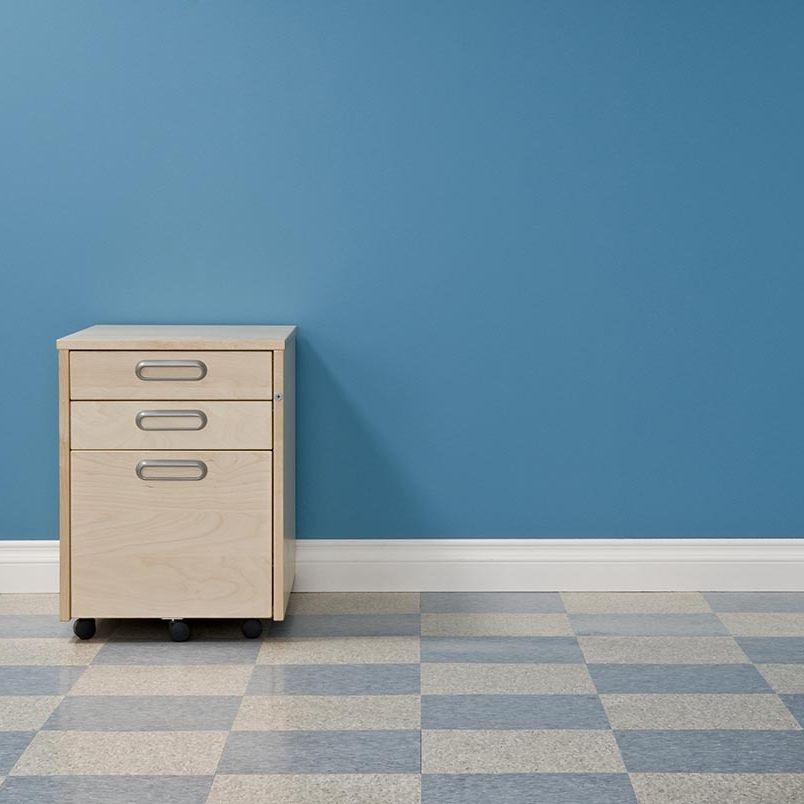
Cork flooring, derived from the bark of cork trees, stands out as a renewable material with unique attributes.
Pros:
Comfortable: Cork’s light and airy nature delivers a comfortable flooring experience.
Water-Resistant: Exhibiting water-resistant properties, it remains suitable for areas like kitchens and bathrooms without becoming slippery when wet.
Eco-Friendly: As a non-toxic and eco-friendly material, cork aligns with environmentally conscious choices.
Cons:
Fading: Prone to fading under intense sunlight, which can impact its appearance over time.
Durability: Cheaper variants might be susceptible to scratches from heavy foot traffic, furniture, and pets.
Cost: Typically falls in the range of $5 to $14 per square foot, including installation.
Conclusion
choosing the right flooring for your home involves considering various factors, including aesthetics, durability, maintenance, and budget. With a wide range of materials available, each flooring type comes with its own set of pros and cons.
Hardwood flooring, with its timeless appeal and the ability to be sanded and refinished, offers warmth and beauty but comes with a higher cost. Laminate, an engineered product with a protective plastic coating, provides durability and affordability but lacks the authenticity of real wood.
Vinyl flooring, a rapidly growing category, offers versatility, resistance to stains, and ease of installation. Carpet, though losing market share, remains a comfortable and cost-effective option, with stain-resistant varieties available. Stone flooring, characterized by its uniqueness and durability, adds value to homes but comes at a premium price.
Concrete flooring, with its customizable appearance and suitability for radiant heating, is a modern and durable choice, albeit with a higher cost. Tile flooring, available in ceramic and porcelain, offers a classic look with a wide range of design options but can be challenging to install.
Cork flooring, derived from cork tree bark, stands out for its comfort, water resistance, and eco-friendly nature, though it may fade under intense sunlight.
Ultimately, the best flooring choice depends on your preferences, lifestyle, and budget, and exploring various options can help you find the perfect balance between form and function for your home.
Read about:bedroom 2 bath 1 story house plans embrace open floor

